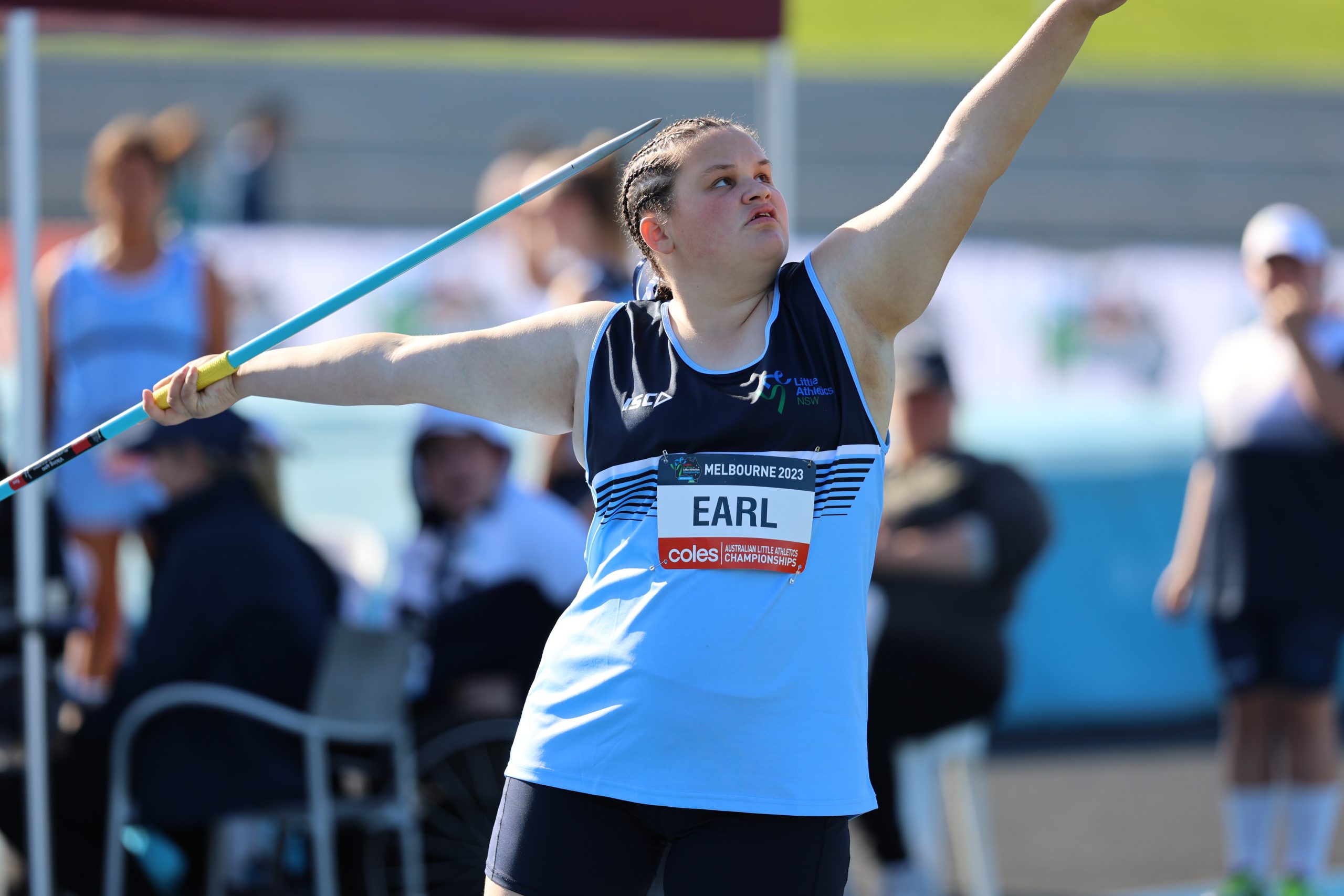Javelin

Javelin Skills
Technique
- Start at the run up position or enter behind the line.
- Body position.
- Stand tall.
- Body sideways with javelin side backwards.
- Feet shoulder-width apart.
- Hold javelin.
- Use the grip with hand under the javelin.
- Behind the body, javelin hand back.
- Hand and arm at shoulder height.
- Javelin parallel to ground.
- Action – Standing start.
- Bend back leg so weight on it.
- Allow arm to fully straighten.
- Turn hip and shoulder forward at the same time.
- Release when hand above head, slightly in front of you.
- Action – Run up.
- Run up for beginners is a controlled 3-5 steps (run up is not compulsory).
- Run on balls of feet.
- Feet facing forward but hips and trunk are still sideways.
- When close to line, land on throwing side foot and plant opposite foot.
- Turn hip and shoulder forward at the same time.
- Release when hand above head, slightly in front of you.
- Exit behind the throwing arc.
Modification Options
- Adjust size or weight of javelin to match the athlete’s upper body and core strength and control.
- Use a modified javelin or vortex howler (safety foam javelin).
- Allow any javelin landing positions ie accept any part of the javelin hitting the ground first.
- Throw javelin from standing start (remove run up).
- Offer seated throws for relevant athletes. Seated athletes can complete multiple throws in a row to help with the function of the event.
- Throwing frame preferred.
- Ensure the frame is correctly strapped to the ground.
- Use appropriate straps / postural anchors such as a pelvic belt and shin belt.
- Chair is positioned facing sideways or forward to field.
- Can use an upright pole for stability and power.
- Techniques to power the movement
- Lean directly backward then forward movement.
- Lean sideways and backward then forward movement.
- Lean backward then forward with trunk rotation.
- Can use own wheelchair or a heavy everyday chair.
- Brakes on.
- Seat belt and chosen postural supports on.
- Chair or wheelchair can be anchored/held by a helper adult to prevent it from tipping/rocking – hold the back of the chair on the opposite side to throwing arm.
- Low backrest if available.
- Trial different rotational angles for the chair ie forward, sideways, throwing side rotated slightly backwards.
- Throwing frame preferred.
- Use bright markers for the throwing and sector lines.
- For blind and low vision athletes, use a guide athlete. See the sensory page for more information.
Before you start
- Ensure correct weight of javelin for the athletes age or athletes’ ability.
- Runway is flat and clear of debris.
- Waiting athletes stand to the side of the runway.
- Officials in the sector face the foul line.
Safety
- Carry javelin vertically, unless throwing.
- Defined throwing and landing area.
- Athletes throw when told to go.
- After throw, Javelin is carried back to the line facing upwards, never thrown back.
Measuring
- Zero end of tape is placed on the first landing point of the javelin tip – it does not have to stick in the ground.
- Pull the tape through to the intersection of sector lines, 8m behind the foul line.
- Measure to the inside of the foul line.
- When is the javelin a foul?
- If the athlete throws underarm, slung or hurled.
- If the javelin lands on or outside the sector lines.
- If the athlete touches the lines making the runway during their throw.
- If the athlete crosses the throwing arc, marking the end of the runway, during their throw.
- If the athlete leaves the runway before the javelin has landed.
- If the athlete turns their back to the landing area during the throw.
- If the javelin does not land with the tip of the metal head first.
- If the athlete exits on or in front of the extension lines from the arc.
Recording
- Record the distance to the nearest whole centimetre below the distance measured.





